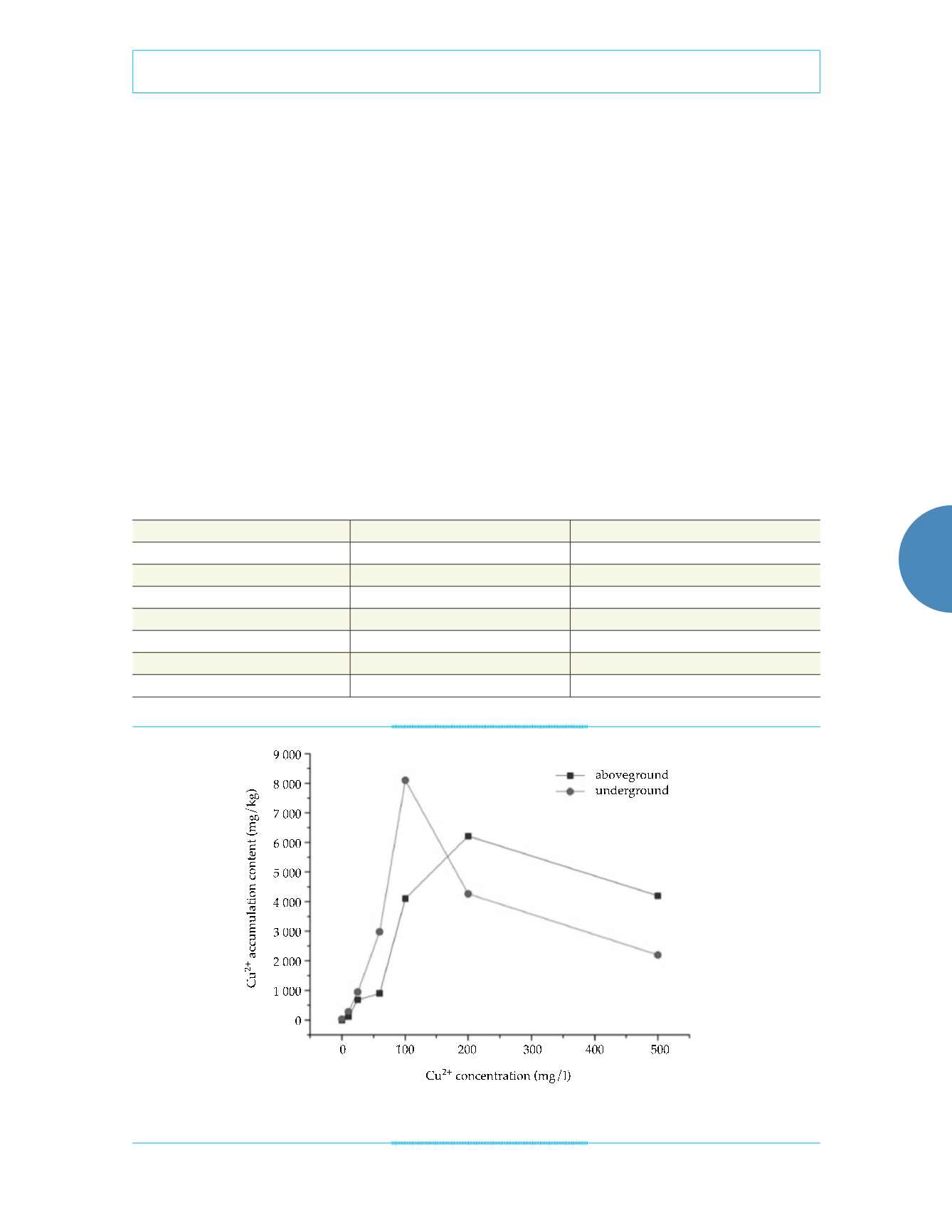
47
Tecnología y Ciencias del Agua
, vol. VIII, núm. 2, marzo-abril de 2017, pp. 43-50
Luo
et al.
,
Phytoextraction potential of wetland plants for Copper in Water Bodies
ISSN 2007-2422
•
accumulated more Cu
2+
than the reeds did, as
shown in figure 1a and 1b.
The accumulation amount of Cu
2+
in
calamus and reed increased with the increase
of pollutant concentration. At medium and
low concentrations, the contents in the un-
derground part of calamus were more than
that in the aboveground part, and the average
retention rate was more than 50%. However,
it was the opposite at high concentrations
(200 and 500 mg/l); the content in the un-
derground parts was lower. The calamus has
a strong ability to enrich and migrate Cu
2+
.
The content of underground part of reed was
higher than that of aboveground parts at six
concentration processes, indicating that the
root system of reed had a strong retention
effect on Cu
2+
, and the average retention rate
was more than 40% (table 3). There was no
significant difference in mean retention rate
between the two species.
The results of the correlation analysis of Cu
2+
contents in the aboveground parts of calamus
and hydroponic solution Cu
2+
concentration
showed that a maximum Cu
2+
content was
achieved when the concentration was 200mg/l.
The variation curve of Cu
2+
content in the un-
derground and aboveground parts were similar.
The optimum enrichment concentration for
copper was 100mg/l (figure 2).
Table 3. Cu
2+
retention rate of calamus and reed.
Cu
2+
concentration(mg/l)
Acorus calamus
(%)
Phragmites australis
(%)
0
80.45
-8.50
10
59.29
32.39
25
28.69
81.31
60
69.84
40.15
100
49.34
53.78
200
-45.36
30.24
500
-91.37
22.08
Figure 2. The correlation between Cu
2+
accumulation content in
Acorus calamus
and Cu
2+
concentration.


